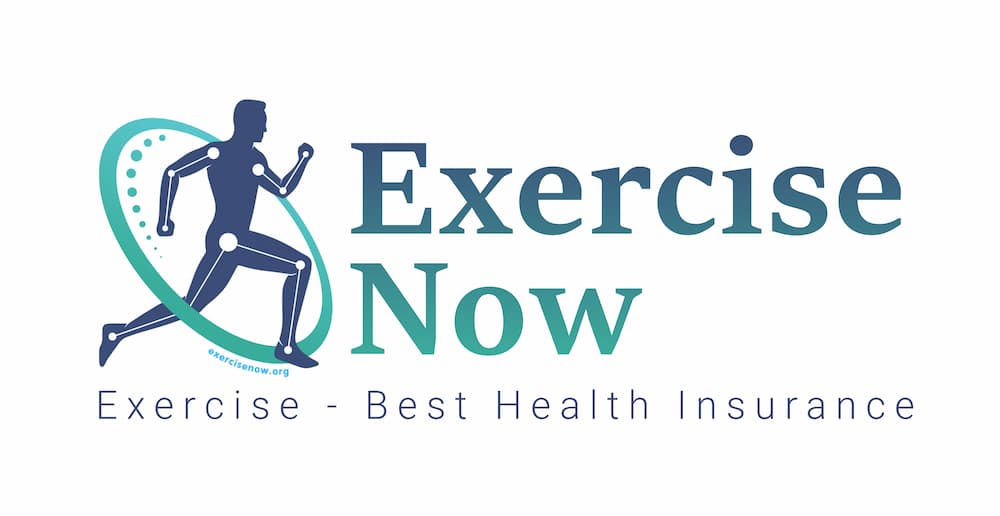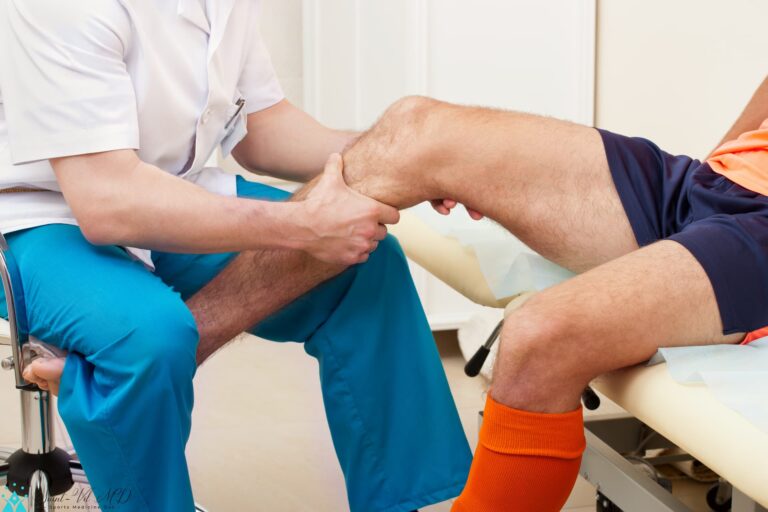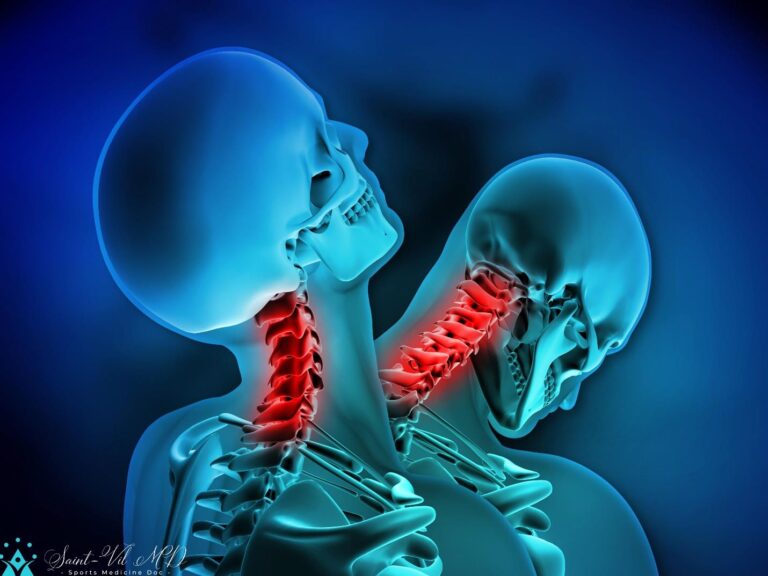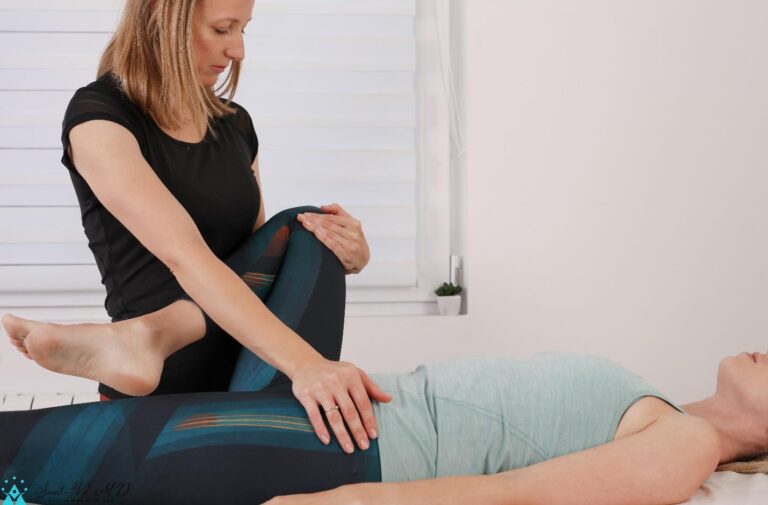
Gluteus Medius Tendinosis
Overview
Gluteus medius tendinopathy is also called Dead Butt Syndrome (DBS). It is a painful condition of the butt caused by inflammation and weakness of the gluteus medius tendon. The gluteus medius tendon is a tendon of relatively smaller muscle when compared to the gluteus maximus. Nonetheless, it plays an important role in hip stability and supports the pelvis. It may affect runners, those starting physical activity after a prolonged interval, long-distance runners, or even increasing the intensity of physical training. It appears that the incidence of the condition is rising, perhaps because many people engage in running or similar exercises after prolonged periods of sitting.
Anatomy
It is a muscle on the lateral side of the butt, as shown in the image. Unlike the gluteus maximum, this muscle particularly plays an essential role in stabilizing the pelvis, and as one can see that one part of the muscle is attached to the pelvic bones and another to the greater trochanter of the femur. Inflammation is most likely to occur in the lower side of this muscle, where it is attached to the bony prominence of the femur. That is why pain is on the side, which is also felt while lying on that side.

Signs and Symptoms
The primary sign of the condition is the stiffness of the butt, pain, and loss of strength. The pain generally radiates to the sides of the legs. This pain becomes worse during certain activities that use this muscle, like running, climbing the stairs, or getting out of the car. However, pain does not only occur during physical activity. It may also happen at night when sleeping on the side of the hip. Quite often, pain may radiate even up to the knee. One may also experience pain when crossing the legs. Here it is vital to understand that the condition is not just inflammatory but also degenerative. It means that the tendon and also gluteus muscle become weak. It is unable to tolerate the stress. In addition, there may be inflammation of the surrounding tissues, like the underlying bursa.
Causes
Tendinosis means that the tendon becomes degenerative or weak. This leads to further tears on
physical exertion, making things worse and causing inflammation. Thus, the condition is more common among those who sit for long hours and start practicing sports. Lack of adequate stretching and warmup before physical activity may also increase its risk. Additionally, some have a higher risk of the condition due to poor hip biomechanics.
In some, it may occur due to increased physical stress, running, tendon overload, and so on. In
addition, individuals with low flexibility of the surrounding muscles are also at a greater risk of
the condition.
Aging is another issue that increases its risk. The risk of the condition is higher in middle-aged
women. Menopause and resulting hormonal changes are other risk factors for the condition.
Risk factors
Prolonged sitting, inadequate warmup before training, lower flexibility of surrounding muscles, stiffness of other hip muscles, and not stretching before training are some of the risk factors. Additionally, aging, female gender, and hormonal issues are also some of the risk factors.
Diagnosis
Physical examination
The diagnosis of the condition generally does not pose many difficulties, and thus doctors confirm the diagnosis based on the history of the patients. For example, pain on the side of the butts that radiate and a pain that gets worse on sleeping on the sides are all indicators of the condition.
Imaging
Imaging has a limited role in confirming the condition. X-rays or even MRIs cannot diagnose mild tendinosis, though they might help exclude more severe conditions. Additionally, MRI may also show some local inflammation of the soft tissues. Thus, imaging is helpful and may also assist in the differential diagnosis of the condition.
Treatment
Home remedies
During periods of acute pain, it is essential to take a break from sports. Apart from rest therapy, over the-counter anti-inflammatory drugs may help. In addition, during the acute phase, ice therapy may help reduce pain. However, once the acute phase is over, on the contrary, heat therapy may help reduce local spasms and promote healing.
Once the acute pain has subsided, one should consult a doctor or physiotherapist who can recommend an exercise program for strengthening the gluteus medius tendon and tell about the ways of preventing future episodes of the condition.
Non-surgical treatment
Tendinosis is a degenerative condition. Although inflammation may be present in the conditions, it is not the primary cause. Thus, doctors may recommend nutrition therapy to the patients, and dietary supplements, to strengthen the tendon. Additionally, well designed physical activity program may also help in the condition. Doctors may also use massage therapy and extracorporeal shock wave therapy to promote healing.
Surgical treatment
There is practically no role of surgical interventions in the condition. Moreover, a complete tear of the tendon is rare.
Prevention
It is a condition caused by prolonged sitting and certain nutritional deficiencies. Thus, those prone to the condition may consider various nutritional supplements like vitamin D, calcium, glucosamine, chondroitin, collagen-rich protein shakes, minerals, and more. Another way to prevent the condition is to engage in stretching exercises. Warmup before extensive training may also help prevent the condition.













